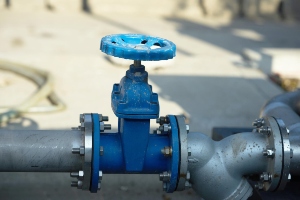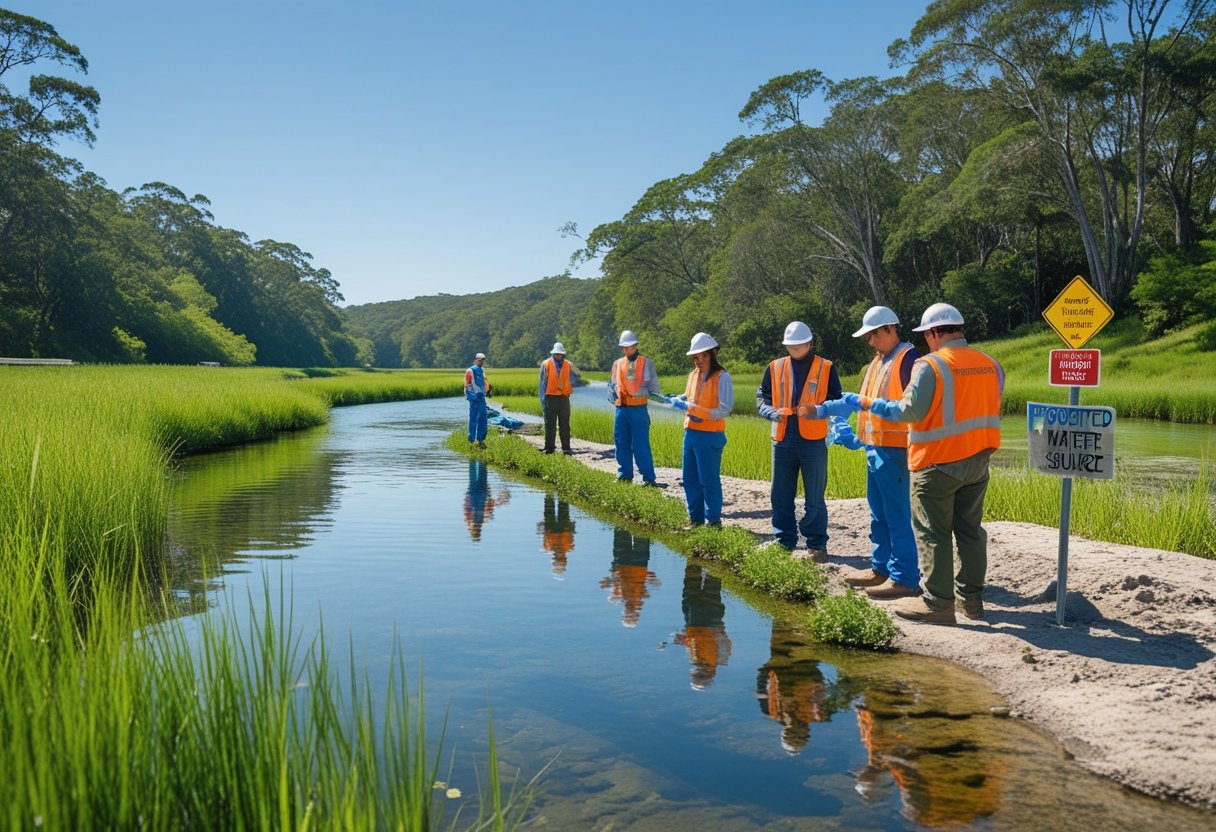Your drinking water is essential for health, but it may carry risks if contaminated. Symptoms of drinking contaminated tap water can include nausea, vomiting, and gastrointestinal issues, which are indicators of potential health threats. Understanding these symptoms can help you identify problems early and take necessary precautions.
Many contaminants, such as bacteria, viruses, and heavy metals, can compromise your tap water's safety, posing significant public health risks. In the United States, drinking water standards are designed to minimize these risks, but breaches can still occur. Being aware of how to recognize signs of contamination is key to safeguarding your health.
If you suspect your tap water might be contaminated, seeking timely assistance is crucial. Pacific Backflow provides reliable backflow testing in San Diego County to help protect your water supply. Ensuring that your backflow preventer is functioning properly can significantly reduce the risks of water contamination.
Recognizing Symptoms of Contaminated Water Consumption
If you've consumed contaminated tap water, you may experience several symptoms that indicate a health risk. These signs can vary from gastrointestinal disturbances to more severe neurological effects. It's crucial to recognize them early to seek proper attention.
Gastrointestinal Issues
Gastrointestinal symptoms are often the first signs of drinking contaminated water. You might notice diarrhea, which can be watery and frequent, accompanied by nausea. Vomiting may also occur, leading to dehydration, especially if symptoms persist. You might experience cramps in your abdomen, which can add to your discomfort. In more serious cases, a combination of these symptoms can lead to illness that requires medical attention. Monitor your body’s response, and if symptoms last more than a day or are severe, seek healthcare guidance. Keeping your drinking water safe is essential. Pacific Backflow provides backflow testing to ensure your water supply is protected.
Neurological Effects
Contaminated water can also impact your neurological system. Symptoms like headaches often arise following exposure to toxins or pathogens in the water. You may also experience fatigue, which can be debilitating in its intensity. In some cases, neurological effects may include disturbances in mental clarity and coordination. If you notice prolonged headaches or unusual tiredness, consider evaluating your water source. Addressing potential contamination is vital for your health. Reliable testing and monitoring can help prevent such issues, and Pacific Backflow specializes in protecting water quality for residents in San Diego County.
Dehydration Signs
Dehydration can occur swiftly when you experience gastrointestinal symptoms. Look for indicators such as excessive thirst, dry mouth, or dark-colored urine. Your body may feel weak, and you might notice decreased energy levels. In severe cases, dehydration can lead to confusion, rapid heartbeat, or fainting. If you find yourself becoming dehydrated, it’s crucial to rehydrate immediately and consult a healthcare professional if symptoms persist. Recognizing these signs can empower you to take prompt action. Regular testing and maintenance offered by professionals can help ensure safe drinking water, preventing health risks from contaminated sources.
Common Contaminants and Corresponding Illnesses
Contaminated tap water can lead to serious health issues. Understanding the specific pathogens and chemicals that pose risks can help you take preventive actions. Below are key contaminants and the illnesses they can cause.
Bacterial Contaminants
Bacterial pathogens are a significant concern in contaminated water supplies. E. coli is particularly notorious, with strains like O157 leading to severe gastrointestinal illness, characterized by diarrhea and abdominal cramps.
Shigella, another bacterial contaminant, causes dysentery. Symptoms include diarrhea, fever, and stomach pain. Legionella bacteria can thrive in warm water systems, leading to Legionnaires' disease, which presents flu-like symptoms and can escalate to severe pneumonia.
Ingesting water with these harmful bacteria can result in acute illnesses, demanding immediate medical attention. Ensuring that your water supply is safe, perhaps with services from Pacific Backflow, is essential for health.
Viral Pathogens
Viral pathogens can also contaminate tap water and lead to outbreaks of illness. Norovirus is a common contaminant, often linked to gastrointestinal outbreaks. Symptoms include vomiting, diarrhea, and stomach pain, often spreading quickly in crowded places.
Like norovirus, other viral infections spread via contaminated water sources. Contaminated water may carry viruses capable of infecting your digestive tract. Preventative measures, including proper backflow testing and maintenance, can help safeguard your drinking water from such pathogens.
Parasitic Organisms
Parasitic organisms present another risk in contaminated water. Giardia is a parasite known to cause giardiasis, resulting in diarrhea, abdominal cramps, and nausea. Even tiny amounts of contaminated water from lakes or improperly managed tap water can transmit this parasite.
Cryptosporidium is similar and can lead to cryptosporidiosis, with symptoms similar to those of giardiasis. These parasites are resilient and not easily removed by standard water treatment processes. Proper testing and monitoring of the water supply can mitigate these threats.
Chemical Hazards
Various chemical contaminants can also compromise tap water safety. Heavy metals, such as arsenic and lead, are serious concerns, as they can accumulate in the body and lead to long-term health issues. Symptoms may manifest differently and include neurological and developmental impacts, particularly in children.
Harmful algal blooms occur in water bodies and can produce toxins that contaminate drinking water. These toxins can have serious health effects, including liver damage and gastrointestinal symptoms. Regular testing, such as those provided by Pacific Backflow, ensures that your water system remains compliant and safe.
Sources and Causes of Water Contamination
Water contamination can arise from various sources, each carrying unique risks to public health. Understanding these sources is essential for recognizing potential risks in both drinking water supplies and at the household level.
Surface Water Contamination
Surface water is often vulnerable to contamination from multiple sources. Pollution from agricultural runoff, urban stormwater, and industrial discharges can introduce harmful chemicals and pathogens into rivers, lakes, and reservoirs. This contamination can result in unsafe conditions for all users, particularly those relying on untreated surface water.
Additionally, heavy rainfall can intensify runoff, exacerbating the risk of pollutants entering the water supply. Common contaminants include fertilizers, pesticides, and heavy metals. If you rely on surface water, be proactive in monitoring water quality and consider treatments to ensure safety, especially during high precipitation events.
Groundwater Issues
Groundwater sources, such as wells, can face contamination from various environmental and human activities. Agricultural practices, especially the use of fertilizers and pesticides, can leach into the soil and eventually reach groundwater. The presence of hazardous substances, like lead from old plumbing, can also compromise the water quality in private wells.
Furthermore, septic systems that are not properly maintained may leak waste into nearby groundwater. Regular testing of well water is critical for early detection of contaminants. If you suspect issues, you might consider contacting a professional service to ensure your water supply is safe.
Distribution System Failures
The infrastructure that delivers water to your home can also be a source of contamination. Aging pipes in public water systems may corrode, leading to the leaching of harmful metals, such as lead and copper, into drinking water. Pathogens can enter the system through breaks or leaks caused by natural disasters or inadequate maintenance.
Inadequate treatment processes at water facilities can further propagate these issues. Regular backflow testing and maintenance can help protect against these risks. For optimal safety and reliability, consider services like those offered by Pacific Backflow to ensure your backflow preventers are functioning properly and compliant with local regulations.
Health Considerations and Risk Groups
Contaminated tap water can pose serious health risks, particularly for vulnerable populations. It's important to understand how these health considerations specifically affect immunocompromised individuals, children, and the elderly.
Impact on Immunocompromised Individuals
Immunocompromised individuals are at a heightened risk when consuming contaminated tap water. These individuals may have weakened immune systems due to conditions like HIV/AIDS, cancer treatment, or organ transplants. Exposure to pathogens in drinking water can potentially lead to severe infections, including gastrointestinal illnesses and conditions like hepatitis.
Contaminated water can carry harmful microorganisms that can be even more dangerous for you, leading to longer recovery times and increased hospital visits. If you fall into this category, ensuring that your water supply is safe is critical. Regular backflow testing and maintenance services from providers like Pacific Backflow can help keep your drinking water clear of contaminants.
Considerations for Children and the Elderly
Both children and elderly individuals are more susceptible to the effects of contaminated water. For children, the presence of toxins or pathogens can cause developmental delays or acute illnesses such as diarrhea and vomiting. The Minnesota Department of Health notes that these symptoms can lead to serious dehydration and hospitalizations.
For the elderly, weakened immune response can increase vulnerability to waterborne diseases, resulting in more severe health outcomes. You should be mindful of water quality at home, considering routine checks and improvements to your tap water system. Services like those from Pacific Backflow can help provide peace of mind by ensuring that your drinking water supply remains safe and compliant with health standards.
Treatment and Prevention Strategies
To ensure you have safe drinking water, understanding treatment methods and public protection strategies is essential. Here’s how you can manage your water supply effectively.
Home Water Treatment
Implementing home water treatment can significantly improve water quality. Filtration systems can eliminate contaminants, making your water safe to drink. Choose filters that are certified to remove specific pollutants.
Reverse osmosis systems offer a thorough solution by forcing water through a semipermeable membrane, removing numerous contaminants. If you're on a private well or suspect contamination, consider frequent water testing to assess quality.
Another short-term fix is boiling water. This method kills bacteria and viruses, providing safe hydration in emergencies. Be sure to allow the water to cool before use. Regular maintenance of your home treatments ensures they work effectively to deliver clean water.
Protecting Public Water Systems
Protecting public water systems involves proactive measures and community cooperation. Understanding water quality reports helps you stay informed about potential contaminants. Local water authorities often provide testing and resources for community awareness.
Your role in preventing contamination adds to the safety of public systems. Be cautious with chemicals in household products and refrain from disposing of waste improperly. Support your community’s efforts in regular maintenance of water infrastructure.
Working with professionals like Pacific Backflow ensures that backflow prevention devices are installed and tested, safeguarding the water supply. Regular testing and compliance with regulations protect everyone’s access to safe drinking water.
Regulations and Reporting
When it comes to drinking water, understanding regulations and reporting requirements is crucial for ensuring safety. These frameworks help you comprehend what standards must be met and how potential contaminants are monitored and managed.
Understanding Drinking Water Standards
The Environmental Protection Agency (EPA) establishes drinking water standards to protect public health. These regulations set legal limits on over 90 contaminants in tap water. Contaminants include harmful chemicals, microorganisms, and heavy metals.
Health departments conduct regular assessments to confirm that water supplies meet these standards. It's important to note that local regulations may vary. Familiarizing yourself with the specific guidelines in your area can enhance your understanding of water quality.
Annual backflow testing is one way you can ensure compliance with local requirements. Companies like Pacific Backflow offer services that verify the integrity of your backflow preventers, contributing to safe drinking water.
Reporting and Remediation
Under the Safe Drinking Water Act, public water systems must provide annual reports on water quality. These reports inform you about contaminant levels and potential health risks associated with drinking water.
Water suppliers must document any violations of drinking water standards and notify customers. Timely reporting helps you stay informed about water quality alerts and ensures appropriate safeguards are in place.
If contaminants are detected, remediation steps must be taken. This may involve correcting the sources of contamination or investing in filtration systems. Engaging professionals, like those at Pacific Backflow, can aid in this process to restore compliance and ensure your water supply remains safe.
Frequently Asked Questions
This section addresses important questions regarding the symptoms and risks associated with drinking contaminated tap water. Understanding these aspects can help you stay informed and take appropriate actions if necessary.
What are the common symptoms experienced after drinking contaminated tap water?
Drinking contaminated tap water can lead to various symptoms. You might experience stomach pain, nausea, vomiting, diarrhea, and headaches. In some cases, symptoms may also include fatigue or jaundice.
How long does it typically take for symptoms to appear after ingesting contaminated water?
Symptoms from consuming contaminated water can appear within a few hours to several days. The timeline varies based on the type of contaminant and your individual health condition.
What are potential diseases that can result from drinking polluted tap water?
Contaminated water can lead to several illnesses, including gastrointestinal infections, cholera, and hepatitis A. Waterborne pathogens can cause serious health issues if not addressed promptly.
What steps should be taken if someone has consumed contaminated tap water?
If you suspect contamination, encourage the affected person to stay hydrated. Monitor for worsening symptoms and seek medical attention if necessary. It's advisable to report the issue to local health authorities.
What are the tell-tale signs that your tap water may be contaminated?
You may notice an unusual taste, a cloudy appearance, or an off odor, such as sulfur or chlorine. Rust stains around fixtures can also indicate contamination issues.
What are the possible health risks associated with long-term exposure to contaminated tap water?
Long-term exposure to contaminated tap water can increase your risk of chronic illnesses, including kidney damage and reproductive problems. Regular testing and maintenance of your water supply is essential for safety.
If you have concerns about your water quality, consider reaching out to professionals like Pacific Backflow. They ensure your backflow preventers are tested and compliant, protecting your water supply for you and your community.











